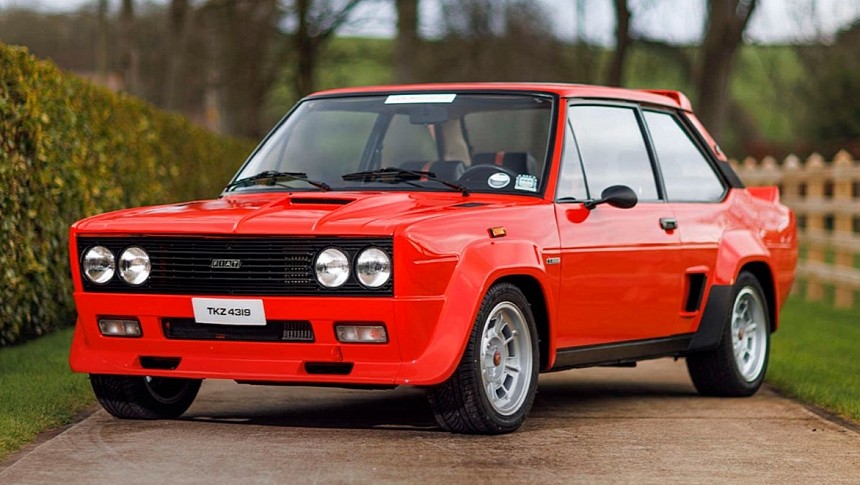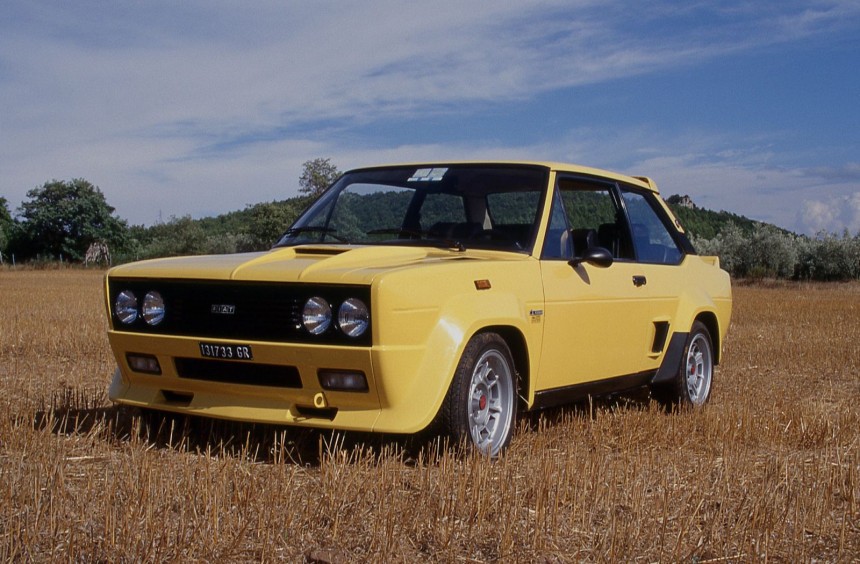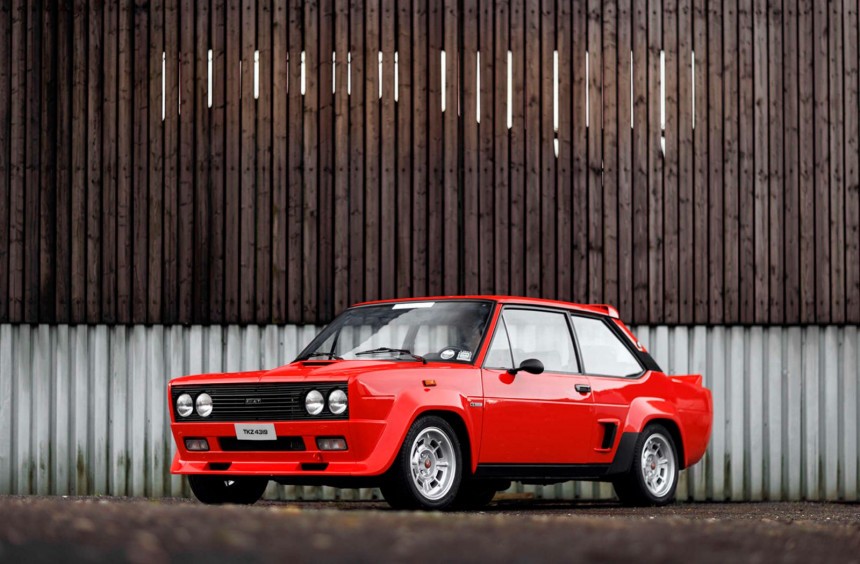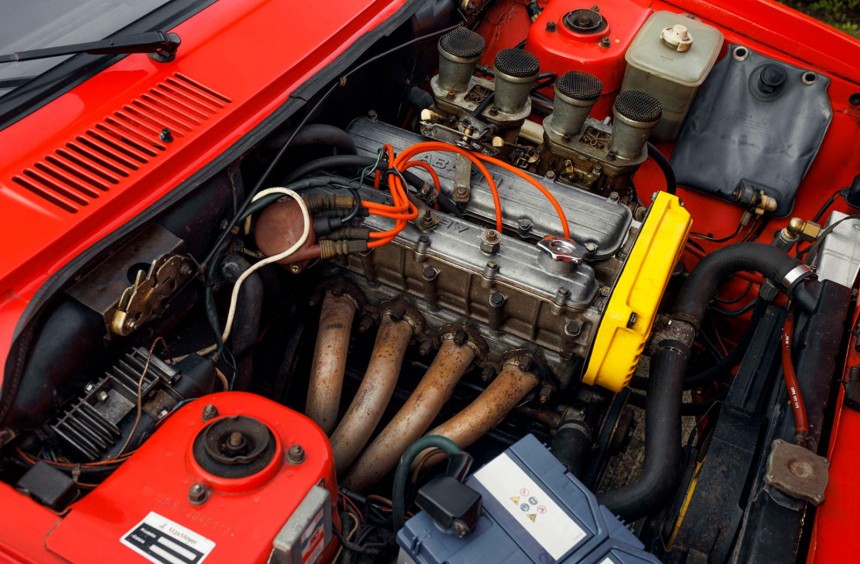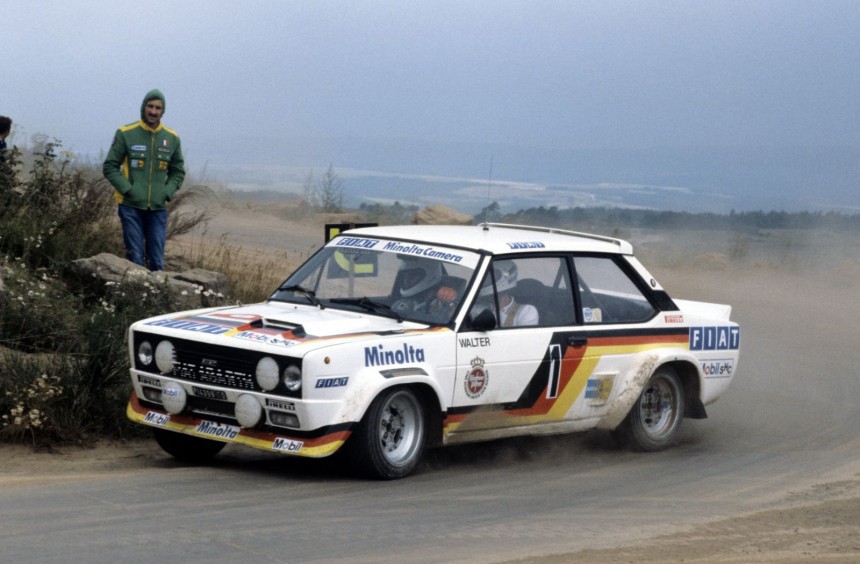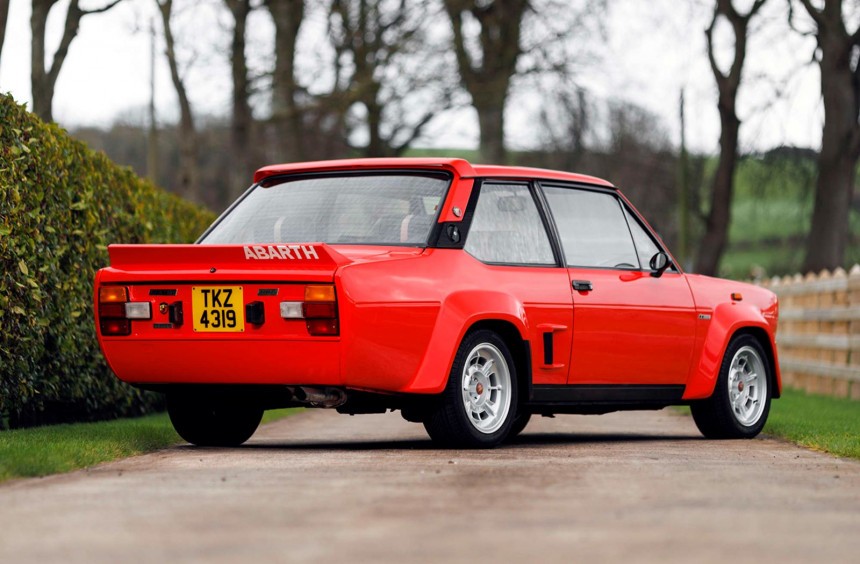Everybody laughed when Fiat announced that a rally-bred version of the plebian Fiat 131 would replace the corporation's mid-engine, WRC-winning Lancia Statos. But, with the help of Abarth, the boxy-looking econocar ended up dominating the competition and spawned one of the most exciting homologation specials of the 1970s.
During the 1970s and 1980s, the World Rally Championship (WRC) was closely contested by many increasingly powerful and innovative machines.
To compete in the Group 4, where these exciting cars battled against each other, the Fédération Internationale de l'Automobile (FIA) required manufacturers to build a minimum number of similar road-going versions, which became known as homologation specials.
This homologation standard gave birth to four-wheeled legends such as the Audi Quattro, Lancia Stratos, Lancia Delta HF Integrale, and Peugeot 205 T16.
Today, these homologation specials are still fondly remembered and sought-after by many enthusiasts, including those who weren't born or were too young when these cars ruled the world of rallying. However, many younger homologation special buffs seem to have forgotten another surprisingly-successful rally-bred icon of the 1970s and 1989s: the Fiat 131 Abarth Rally.
As you may or may not know, the Fiat Group is one of Europe's biggest automotive enterprises. Now under the Stellantis corporate umbrella, it began amassing the bulk of Italy's finest brands during the 1960s and 1970s.
It all started with acquiring the controlling stake in Ferrari and Lancia in the late 1960s. During the 1970s, it added Abarth to its portfolio, continuing with Alfa Romeo and Maserati over the next two decades.
During the early 1970s, after acquiring Lancia and Abarth, the parent corporation initially allowed them to continue their rally programs and compete against each other. But, as Lancia was amassing WRC titles with their brilliant Stratos, Fiat decided that the best way to gather public interest in their post-oil crisis econocars was to enter one in the WRC.
While Lancia would be allowed to continue its rally efforts, albeit with diminished funds, Abarth became Fiat's competition department, and its first task was to transform the newly-introduced 124 into a rally car.
But as the venerable 124 was replaced by the improved 131 and Lancia's Stratos was entering its final years as a factory-backed WRC competitor, Fiat chose to gradually replace it as the corporation's flagship Group 4 rally car with an Abarth-prepped 131, beginning with the 1976 season.
Unlike the futuristic Startos, which was more or less a 1970s supercar powered by a mid-mounted Ferrari Dino V6, the Fiat 131 was a small and unattractive brick on wheels available with a series of underpowered inline-fours.
Although the WRC crowd initially ridiculed Fiat's decision, Abarth's engineering wizards gave them a glimpse of what they were capable of doing with the 131 platforms by winning the 1975 Giro d'Italia Automobilistico with a thoroughly modified Group 5 prototype called Abarth SE 031.
But, for the WRC's Group 4, the Fiat-Abarth effort needed a toned-down version that could be produced in at least 400 street-legal examples, so in late-1975, they put together the Fiat 131 Abarth Rally.
Based on the standard two-door sedan, the homologation special was partially assembled and stylized by Turin coachbuilders Bertone. It received ample exterior modifications such as wider wheel arches, new fenders, Plexiglass side windows, and a host of fiberglass body panels meant to lower the shell's weight significantly.
While Bertone transformed the mundane 131 body into a lightweight, sports car-looking shell, Abarth had to modify the chassis and engine.
The company's experts started with the rear suspension, which, in stock form, was comprised of a solid live rear axle. While the setup worked well on the streets, it was not suitable for the rigors of rallying, so it was replaced with an independent multi-link layout featuring MacPherson struts, lower semi-trailing arms, and transverse torque rods.
Additionally, the stock braking system with front discs and rear drums was also gutted out in favor of a high-performance setup with 8.9-inch (227 mm) discs hidden behind 15-inch Cromodora CD68 cast-magnesium wheels.
As I mentioned earlier, the standard 131 was powered by an inline-four available in various displacement configurations that delivered 75 hp in its most potent form.
Abarth's Aurelio Lampredi - the man behind Ferrari's small-displacement V12 family, which dominated motorsport during the 1950s - oversaw the engine development project. He took the stock cast-iron block and extended the stroke from 2.8 inches (71.5 mm) to 3.5 inches (90 mm), which increased the engine's displacement to 2.0 liters. He also equipped it with performance internals and an aluminum cylinder head with dual overhead camshafts (DOHC) and four valves per cylinder.
Mated to a non-synchromesh,dog-leg, five-speed manual, and a ZF limited-slip differential, the Abrath four-cylinder was rated at 140 hp and 130 lb-ft (176 Nm) of torque.
With a dry weight of 2,160 pounds (980 kg), the street-legal Fiat 131 Abarth Rally could sprint to 62 mph (100 kph) in 7.7 seconds and reach a top speed of 119 mph (97 kph).
Fiat managed to build the 400 street-legal units required for homologation, and the 131 Abarth debuted in the WRC in 1976, where it only took part in a couple of races.
Compared to the street version, the rally car used a slightly modified version of the four-cylinder engine that could make up to 237 hp thanks to upgrades such as dry-sump lubrication and, later, Kugelfischer mechanical fuel injection.
From 1977 to 1981, when Fiat withdrew from rallying and handed the reigns back to Lancia, the 131 Abarth dominated the championship, silencing the doubters. It helped bring Fiat Manufacturers' titles in 1977, 1978, and 1980. Furthermore, Markku Alen (1978) and the legendary Walter Röhrl (1980) won the WRC Drivers' title while driving the Abart-prepped 131.
As you can imagine, the 400 road-legal versions built from October 1975 to April 1976 sold like hotcakes despite being nearly four times more expensive than the standard two-door 131.
While the Abarth Rally was no Lancia Stratos, it was still an outrageous little banger that behaved like a thoroughbred sports car.
Many of the 400 units have survived, and although the model was never as popular as other homologation specials from the same era, it's still highly sought after in today's classic car market. An all-original, low-milage example currently goes for well over $150,000, and the vast majority can be found in Europe, since Fiat only sold it on the Old Continent.
Eclipse by the Audi Quattro or the Lancia Delta Integrale, the Fiat 131 Abarth Rally remains one of the most exciting homologation specials of its era. If you want to learn more about this legend and see it stretching its legs on a twisty road in Tuscany, we recommend watching the YouTube video below by Petrolicious.
To compete in the Group 4, where these exciting cars battled against each other, the Fédération Internationale de l'Automobile (FIA) required manufacturers to build a minimum number of similar road-going versions, which became known as homologation specials.
This homologation standard gave birth to four-wheeled legends such as the Audi Quattro, Lancia Stratos, Lancia Delta HF Integrale, and Peugeot 205 T16.
Today, these homologation specials are still fondly remembered and sought-after by many enthusiasts, including those who weren't born or were too young when these cars ruled the world of rallying. However, many younger homologation special buffs seem to have forgotten another surprisingly-successful rally-bred icon of the 1970s and 1989s: the Fiat 131 Abarth Rally.
Replacing the mid-engine, Ferrari-powered Stratos
It all started with acquiring the controlling stake in Ferrari and Lancia in the late 1960s. During the 1970s, it added Abarth to its portfolio, continuing with Alfa Romeo and Maserati over the next two decades.
During the early 1970s, after acquiring Lancia and Abarth, the parent corporation initially allowed them to continue their rally programs and compete against each other. But, as Lancia was amassing WRC titles with their brilliant Stratos, Fiat decided that the best way to gather public interest in their post-oil crisis econocars was to enter one in the WRC.
While Lancia would be allowed to continue its rally efforts, albeit with diminished funds, Abarth became Fiat's competition department, and its first task was to transform the newly-introduced 124 into a rally car.
But as the venerable 124 was replaced by the improved 131 and Lancia's Stratos was entering its final years as a factory-backed WRC competitor, Fiat chose to gradually replace it as the corporation's flagship Group 4 rally car with an Abarth-prepped 131, beginning with the 1976 season.
Transforming a mundane people-mover into a thrilling homologation special
Although the WRC crowd initially ridiculed Fiat's decision, Abarth's engineering wizards gave them a glimpse of what they were capable of doing with the 131 platforms by winning the 1975 Giro d'Italia Automobilistico with a thoroughly modified Group 5 prototype called Abarth SE 031.
But, for the WRC's Group 4, the Fiat-Abarth effort needed a toned-down version that could be produced in at least 400 street-legal examples, so in late-1975, they put together the Fiat 131 Abarth Rally.
Based on the standard two-door sedan, the homologation special was partially assembled and stylized by Turin coachbuilders Bertone. It received ample exterior modifications such as wider wheel arches, new fenders, Plexiglass side windows, and a host of fiberglass body panels meant to lower the shell's weight significantly.
A thoroughly modified chassis and an inline-four on steroids
The company's experts started with the rear suspension, which, in stock form, was comprised of a solid live rear axle. While the setup worked well on the streets, it was not suitable for the rigors of rallying, so it was replaced with an independent multi-link layout featuring MacPherson struts, lower semi-trailing arms, and transverse torque rods.
Additionally, the stock braking system with front discs and rear drums was also gutted out in favor of a high-performance setup with 8.9-inch (227 mm) discs hidden behind 15-inch Cromodora CD68 cast-magnesium wheels.
As I mentioned earlier, the standard 131 was powered by an inline-four available in various displacement configurations that delivered 75 hp in its most potent form.
Abarth's Aurelio Lampredi - the man behind Ferrari's small-displacement V12 family, which dominated motorsport during the 1950s - oversaw the engine development project. He took the stock cast-iron block and extended the stroke from 2.8 inches (71.5 mm) to 3.5 inches (90 mm), which increased the engine's displacement to 2.0 liters. He also equipped it with performance internals and an aluminum cylinder head with dual overhead camshafts (DOHC) and four valves per cylinder.
Mated to a non-synchromesh,dog-leg, five-speed manual, and a ZF limited-slip differential, the Abrath four-cylinder was rated at 140 hp and 130 lb-ft (176 Nm) of torque.
With a dry weight of 2,160 pounds (980 kg), the street-legal Fiat 131 Abarth Rally could sprint to 62 mph (100 kph) in 7.7 seconds and reach a top speed of 119 mph (97 kph).
Racing career
Compared to the street version, the rally car used a slightly modified version of the four-cylinder engine that could make up to 237 hp thanks to upgrades such as dry-sump lubrication and, later, Kugelfischer mechanical fuel injection.
From 1977 to 1981, when Fiat withdrew from rallying and handed the reigns back to Lancia, the 131 Abarth dominated the championship, silencing the doubters. It helped bring Fiat Manufacturers' titles in 1977, 1978, and 1980. Furthermore, Markku Alen (1978) and the legendary Walter Röhrl (1980) won the WRC Drivers' title while driving the Abart-prepped 131.
The 131 Abarth Rally today
While the Abarth Rally was no Lancia Stratos, it was still an outrageous little banger that behaved like a thoroughbred sports car.
Many of the 400 units have survived, and although the model was never as popular as other homologation specials from the same era, it's still highly sought after in today's classic car market. An all-original, low-milage example currently goes for well over $150,000, and the vast majority can be found in Europe, since Fiat only sold it on the Old Continent.
Eclipse by the Audi Quattro or the Lancia Delta Integrale, the Fiat 131 Abarth Rally remains one of the most exciting homologation specials of its era. If you want to learn more about this legend and see it stretching its legs on a twisty road in Tuscany, we recommend watching the YouTube video below by Petrolicious.
